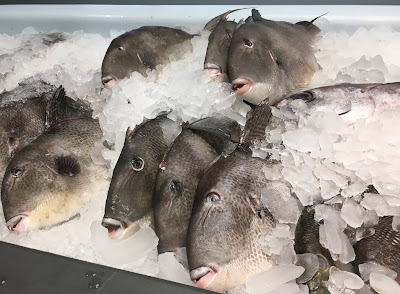We have actually passed this abandoned station many times, on our way to Hatteras Island just on the other side of Oregon Inlet, and often wondered about it.
The story is also a story of the injustice and racial segregation that permeated this part of the country for so long. It was a remarkably progressive thing to do in that political climate to allow African Americans to man a lifesaving station, and they served with distinction.
The documentary began, appropriately enough, with the well-known quote by Martin Luther King Jr.:
The ultimate measure of a man is not
where he stands in moments of comfort and convenience,
but where he stands at times of challenge and controversy.
That is surely a quote we should remember in these political times!
After the film, we walked around Beaufort, surely one of the most beautiful little towns that we know. In fact, it was named “America’s Favorite Town” by Travel & Leisure magazine several years ago, and Southern Living designated it the "South's Best Small Town 2019." It is filled with little gardens and alleys, like this narrow courtyard on Craven Street.
Beaufort also contains some beautiful historic homes dating to the 16th and 17th centuries, many of them reconstructed following hurricane damage over the years. I have always loved this little architectural gem right on Front Streeet, the historic Carteret Academy Building, ca. 1842, with its distinctive mermaid weathervane.
I wandered down to Taylor's Creek and walked along the waterfront for awhile. Across the water is the Rachel Carson Reserve, accessible only by boat, where a small herd of wild horses live; locals say they can occasionally see them on the far shore.
This morning, we returned to Beaufort's Maritime Museum once again for another "Brown Bag Gam" luncheon talk called The Great Dutch-Net Debate. Museum Curator David Bennett told us about the introduction of the pound net in North Carolina in the 19th century and the transformative, although controversial, impact that it had on the state’s commercial fishing industry. Fishing until then had been done using seine nets, and the Dutch net, also called the pound net, was a technical innovation that was also less expensive. That sounds like a dull subject - dare I say a dry subject? - but it touched on many topics, including the efforts of moneyed interests in the fishing industry to lobby the State legislature for favorable treatment. And now we know the distinction between Dutch nets, seine nets, and gill nets.
Next time we go to Blue Ocean seafood market we will have to ask what kind of method was used to catch all those fish displayed on ice.








No comments:
Post a Comment